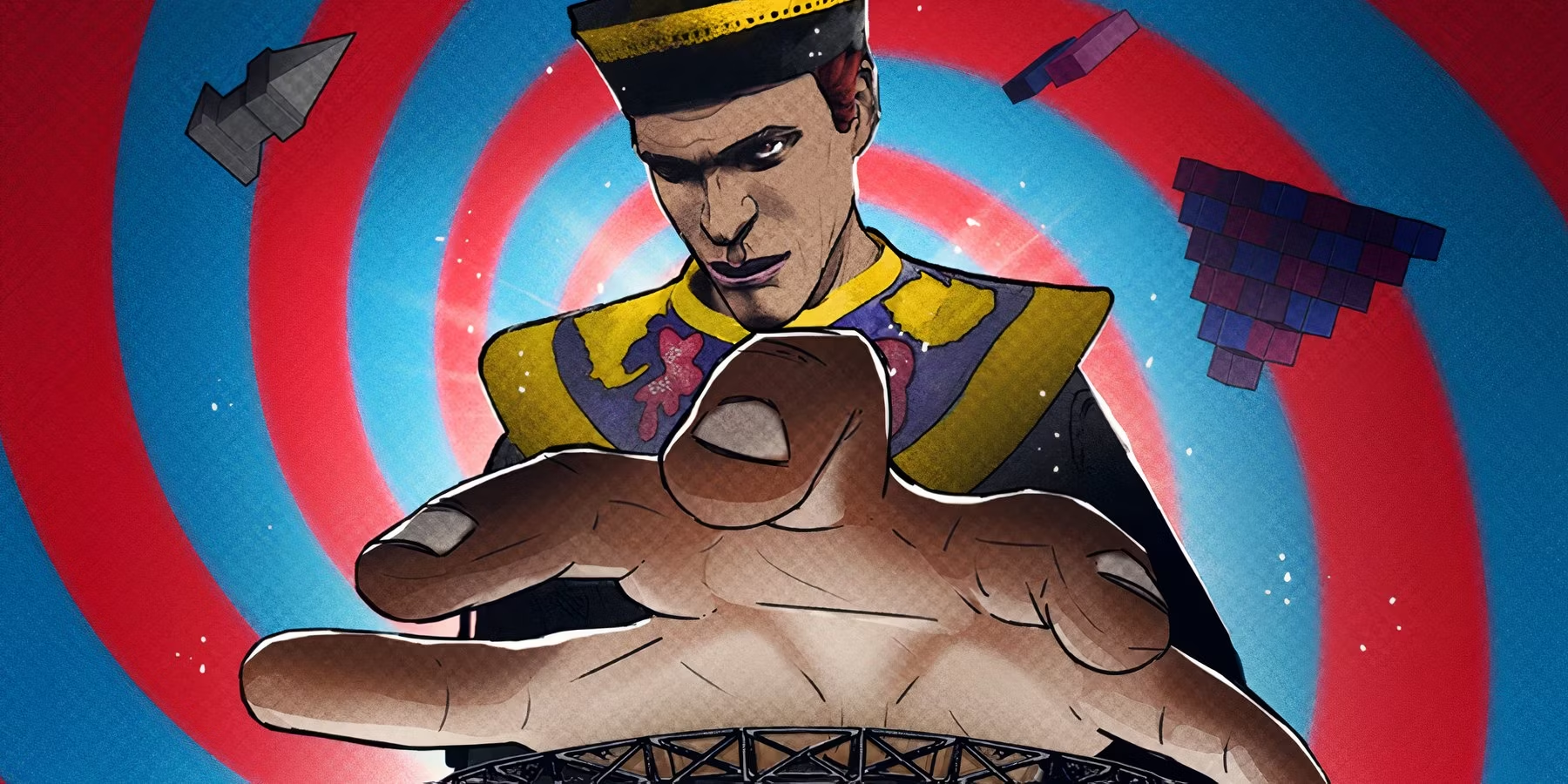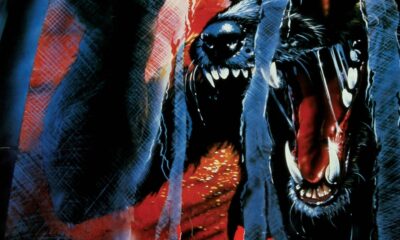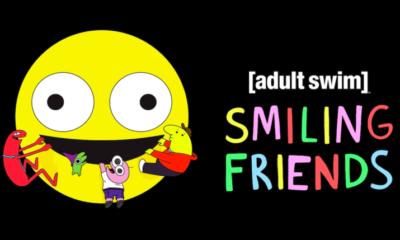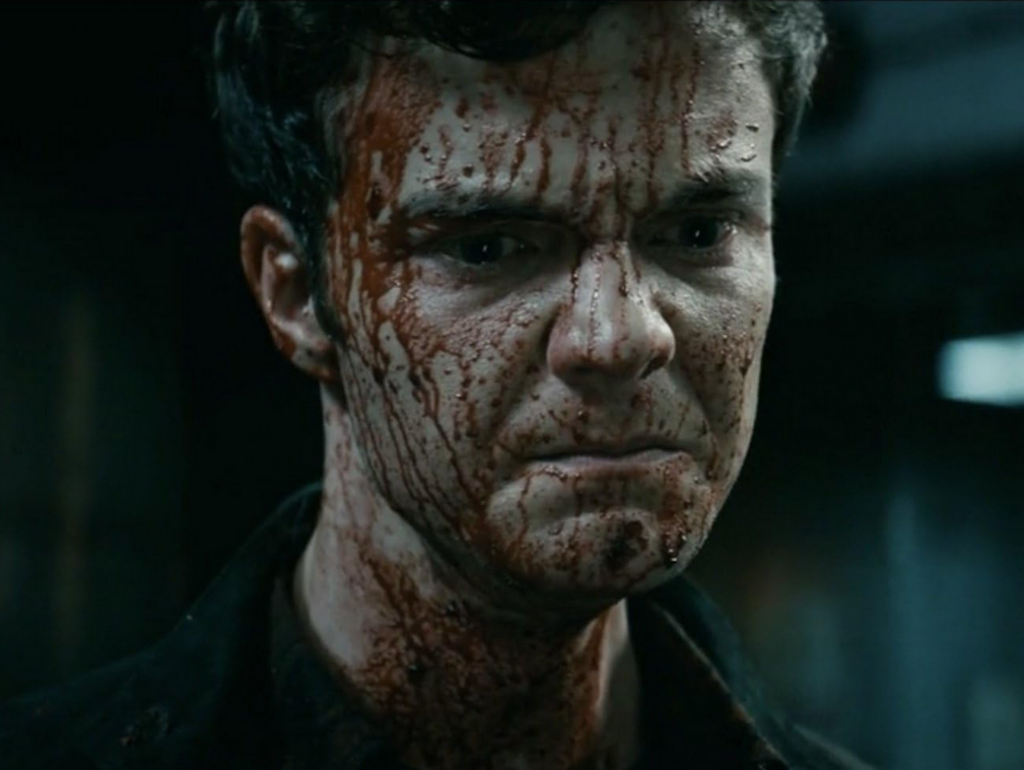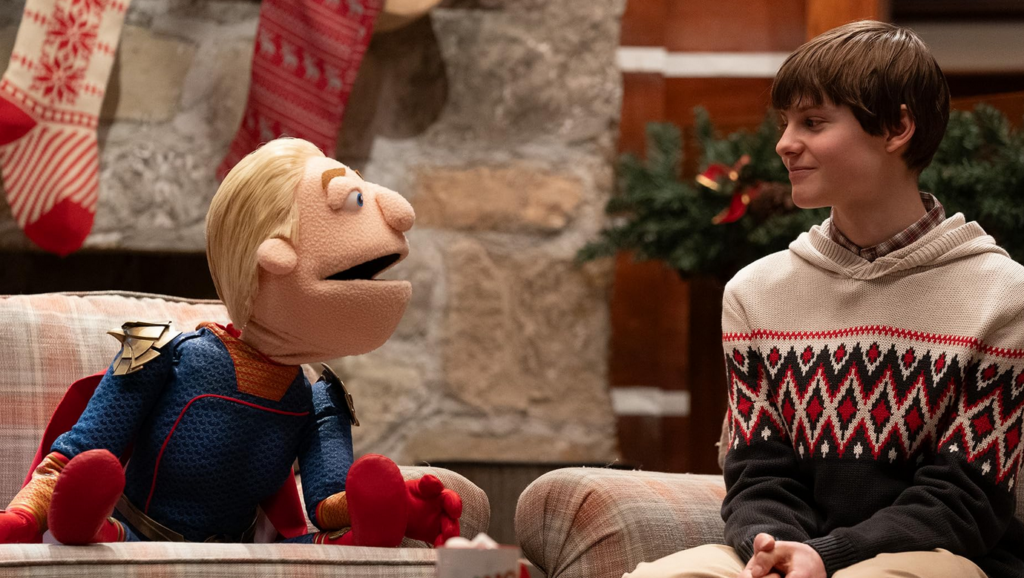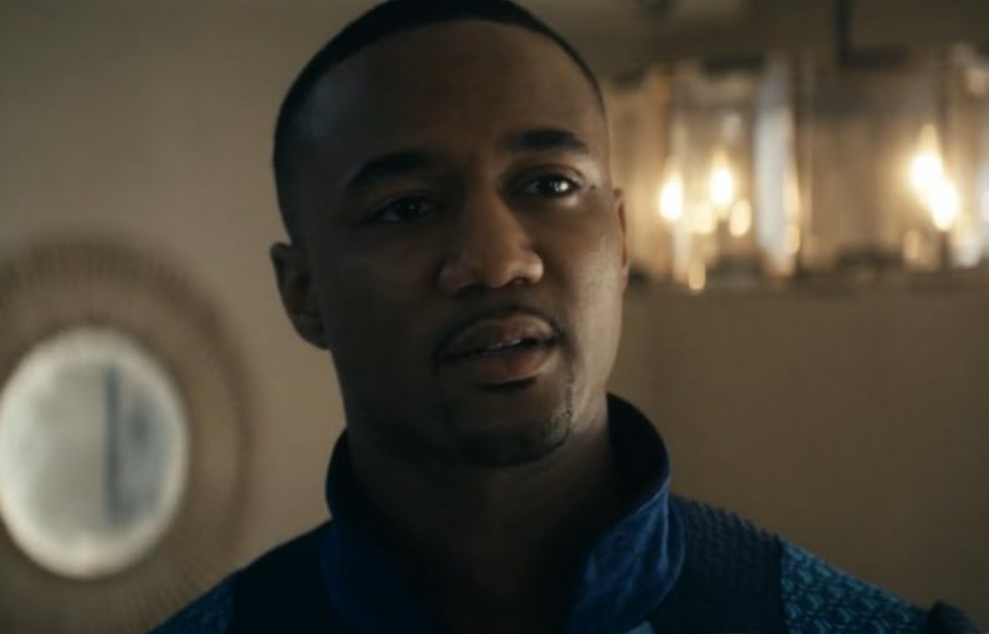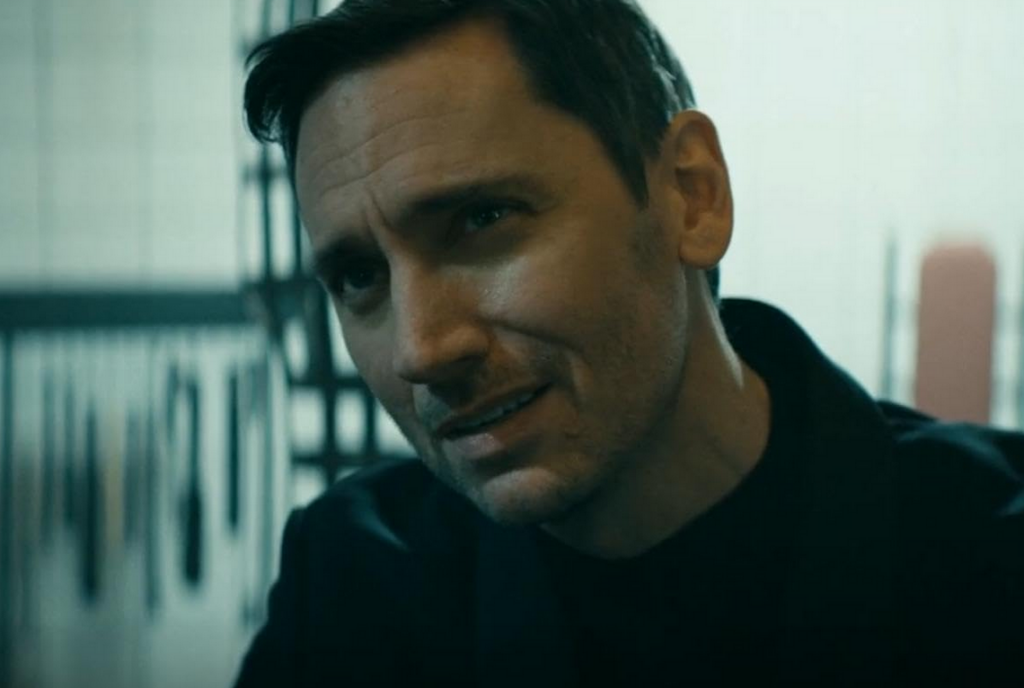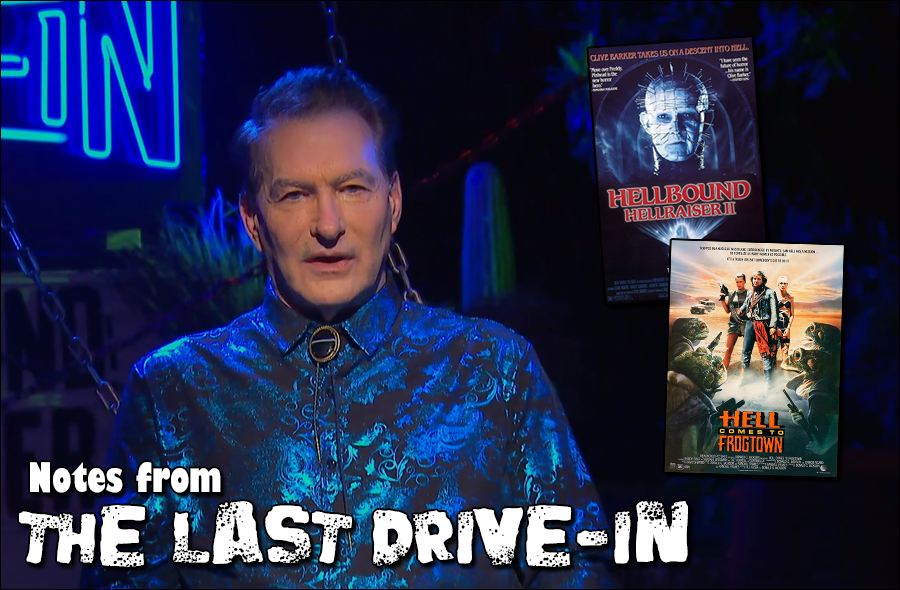
Notes from The Last Drive-In: S2E9
More Videos
Published
4 years agoon
Well, that is the second season of The Last Drive-In with Joe Bob Briggs. There were no signs of a sophomore slump this season as the show iterated on the first season in a few ways. We also were treated to some really historic moments in Drive-In history, playing off of things from clear back in the days of MonsterVision.
As of this moment, The Last Drive-In season 3 has not been confirmed but I think we can afford to be optimistic. Considering the show rising up the trending algorithm all nine weeks on Twitter and the larger profile the show has built thanks to a global pandemic, Shudder would probably like to keep up the conversation and subscriptions that the show brings in.
As for the season finale? We get two visions of hell by seeing the sights of Hellbound: Hellraiser II and taking a trip and checking out Hell Comes to Frogtown.
Like if you are horny for cenobytes.#thelastdrivein @therealjoebob @kinky_horror @shudder— Haunted MTL 🏳️🌈 (@HauntedMTL) June 20, 2020
Hellbound: Hellraiser II (1988)
Moral of the story…
Buy your mattresses new.#thelastdrivein @therealjoebob @kinky_horror @shudder— Haunted MTL 🏳️🌈 (@HauntedMTL) June 20, 2020
Opening Rant: The need for physical media in a largely corporate-curated world.
Hellbound: Hellraiser II is a worthy sequel to the original Hellraiser, previously on The Last Drive-In during the original marathon. Some would argue that the sequel may be better than the first film, and it’s not hard to imagine why. Hellraiser II was a major film that set the trajectory of the series and also presents a real lost opportunity. The film takes place moments after the previous films and finds Kirsty (sans-boyfriend) in an asylum, having been treated like a madwoman given her sharing her experiences with the Cenobites. Sure enough, her warnings go unheeded and a manipulative Dr. Channard claims the mattress where Kirsty’s evil stepmother Julia met her end. Then Julia comes back and the movie gets nuts.
It’s a good movie. A bit familiar in a number of ways. The Cenobites aren’t quite as shocking, and the Leviathan is a conceptual misfire. The asylum elements remind too easily of A Nightmare on Elm Street 3: The Dream Warriors down to having a gifted patient in the mix. The Cenobites are kind of wedged in and don’t do much in order to prop up the concept of the Leviathan.
What works, though, are the performances by Clare Higgins and Julia and Ashley Laurence as Kirsty. The film is largely on the backs of these two women: a manipulative and monstrous Julia, more terrifying and assertive than Frank ever was in the first film, and shrewd and clever Kirsty who is in the upper-echelon of horror heroines who deserve way better.
Joe Bob addressed the odd and uneven nature of the movie surrounding Julia. Clive Barker intended Julia to become the major antagonistic force of the series but the Cenobites essentially stole her thunder, which is a real shame because Julia is probably one of the most compelling and interesting horror villains basically ever. One envisions another Hellraiser series in another universe where Julia remained beyond Hellbound and there becomes a dual-threat of Cenobites and Julia, fighting for control of Hell.
The highlight of Joe Bob’s host segments came down to Ashley Laurence and Doug Bradley, Kirsty, and Pinhead himself, taking time to chat with our favorite movie host. They each had a moment to speak to Joe Bob one-on-one, but they also managed to have a more delightful triad of discussion. Ashley, who can be found on Twitter, does some great painting and she got to hold Ernie (!) playing on her appearance in a GEICO commercial. Doug Bradley is wonderfully classy and doesn’t wear the Cenobite makeup lately, but he can be found reading Mary Shelley’s Frankenstein on YouTube.
Of course, we can’t forget Hell Priest Ernie, chained Joe Bob, or Cenobite Darcy, either. It was a fun night.
I love Hellbound: Hellraiser II about as much as I love the original Hellraiser. I also think about the lost opportunity of Julia driving the franchise and while I cannot hold that against the series it does present an interesting “what if?” It’s still a good sequel, maybe not the sequel the series deserved, but a good sequel regardless. Joe Bob gave the film four stars, a well-earned four stars given the potential failure a sequel presents. I give Hellbound: Hellraiser II four and a half Cthulhus.

Best Line: “It is not hands that summon us. It is desire.” – Pinhead
Hell Comes to Frogtown (1988)
This movie was all about BDSM
Big
Dick
Securing
Mechanism#thelastdrivein @therealjoebob @kinky_horror @shudder— Haunted MTL 🏳️🌈 (@HauntedMTL) June 20, 2020
Opening Rant: Five reasons not to be a polygamist.
Ah, yes, Hell Comes to Frogtown. A slice of 1980s cheese I had always heard of but never saw. It’s a goofy film and while I don’t know if it was the best film to leave the season off with, it was totally worth watching and I am sure to check it out again, and again, and again. It’s not a movie that can be made today and elements of it are still particularly cringe-inducing, but as a relic of another era it’s completely worth preservation and The Last Drive-In seems like the perfect way to do that.
Hell Comes to Frogtown stars the legendary wrestler “Rowdy” Roddy Piper as Sam Hell, a particularly virile man who is conscripted by the provisional government to impregnate women all across the wasteland of America. He travels with a pair of these warrior-nurses to the titular Frogtown to recover a group of fertile women who have been kidnapped as sex-slaves by mutant, humanoid frogs. It’s a classic story we’ve all seen before, but have we seen it with the delightful commentary of Joe Bob Briggs? Well, we have now.
The movie’s handling of women as sexual objects and the implications of forced impregnation are pretty horrifying to modern sensibilities and the movie plays it off as a hyper-masculine joke. The film really, largely works due to the earnestly goofy performance of Roddy Piper who makes Sam Hell are largely sympathetic and funny protagonist, dipping into the well of Kurt Russel’s Jack Burton-school of bumbling heroes. Piper does get to play the hero, particularly toward the end, but the film largely plays Sam as comedic and it works all the better for it.
The film is audacious in the world it builds, largely shooting in deserts and and a run down factory, the film makes the most of the post-apocalyptic setting and that money instead goes into the largely amazing frog prosthetic pieces. Some of the frogs are more hybrid and less impressive than others, but the major feature players are absolutely incredible for 1988 and a 7-million dollar budget.
Joe Bob appreciated the pulpy energy of the film. It also helps that it featured MonsterVision fan and friend, the dearly departed Piper. Among some of the knowledge, bombs dropped on viewers are the history and work of Donald G. Jackson and some Roger Corman connections (because who else?) Joe Bob was particularly enthused, saying Donald G. Jackson was a long-overdue director on The Last Drive-In. Perhaps one of his infamous rollerblading films may show up in season three? Of course, Jackson had a long career in the industry as some of these drive-in directors tend to do, having worked with Roger Corman and James Cameron. Most notable among Jackson’s associations, however, was his collaboration with Scott Shaw and the development of what they called “Zen Filmmaking” – a largely script-less form of movie-making.
Joe Bob Briggs gave Hell Comes to Frogtown the four-star treatment which is a pretty fair assessment with how well it fits into The Last Drive-In‘s wheelhouse. It’s not my favorite choice to end the season, skewing a bit too far from the horror genre, but it’s still pretty damn fun. I give Hell Comes to Frogtown three and a half Cthulhus.
 (3.5 / 5)
(3.5 / 5)
Best Line: “Hey, you try making love to a complete stranger in a hostile, mutant environment, see how you like it.” – Sam Hell
Haunted MTL Drive-In Totals
These are the last Drive-In totals of the season. Quite a lovely collection. Thank you, Shudder.
You had us at “zombie deep throat french kissing”, @therealjoebob. Here are your Drive-In Totals! #TheLastDriveIn (Nice chains, Yuki!) pic.twitter.com/K4JpRhxpZq— Shudder (@Shudder) June 20, 2020 We’ve got some ultra froggy, chainsaw-laden Drive-In Totals, #MutantFam! 🐸 #TheLastDriveIn pic.twitter.com/GtQvByfXam— Shudder (@Shudder) June 20, 2020
Our Totals?
- 174 Sequels
- 2 Jail sentences for Darcy
- 7 Roller Blade films
- 3 Frogtown Endings
- Double Guest Fu
- Censorship Fu
- Chainsaw Surgery Fu
- GEICO Fu
- Glass Bottle Fu
- Badass Name Fu
- Brain Surgery Fu
- Joe Bob Chaining
- Lament Configurating
- Demon Summoning
- Ernie Holding
- Teen Slapping
- Teeth Chattering
- Dick Beeping
- Wedding Joking
- Goopy Mattress
- Frickassied Frank
- Hellraiser Philosophy
- Gratuitous Candles
- Gratuitous Frog Burlesque
- Gratuitous emotional Joe Bob Briggs solo song
- Laser Floyd Finale
- Tactical Lingerie
- Extended Hallway Running Sequence
- Bonus Yuki Cosplay
- Silver Bolo Award: The Horrors of it All
- Darcy Cosplay: Hell Priestess Darcy

Episode Score
The season finale did the job of providing a great episode should the show continue further while also creating a potential ending should the show not move forward. While this ending wasn’t as flash as season one’s prom for Darcy, there is something touching about what we ended up getting this time around: Joe Bob Briggs, voice cracking, singing the theme accompanied by a frog guitarist.
If this is the end of the ongoing series that’s a pretty fitting coda to what has been a great treat for the horror community in an especially hard time. We know a summer marathon is on the way and more than likely we’ll be seeing a third season of the ongoing show.
But if this is the final full season, I think it went out in a really appropriate way.

That’s it for the Notes from The Last Drive-In for a bit. Thank you all for reading these recaps over the past nine weeks. Let me know what you think. I write these things for us and I would love to know what the MutantFam wants to see out of them.
You know, I think we can all look back at this episode and remember it fondly.
Warts and all.#thelastdrivein @therealjoebob @kinky_horror @shudder— Haunted MTL 🏳️🌈 (@HauntedMTL) June 20, 2020
David Davis is a writer, cartoonist, and educator in Southern California with an M.A. in literature and writing studies.

You may like
We have come now to the finale of season four of The Boys. And while it didn’t have the literal blood fireworks I wanted, someone did get ripped in half in the air. So, that’s pretty close.
As a note, I will try to avoid spoilers as much as possible. This ending was a hell of a gut punch that should be experienced as blindly as possible. That being said, I will not be able to avoid spoilers and still give a full legitimate review. Proceed at your own risk.
The story
The main storyline for this episode is the attempted assassination of President-Elect Robert Singer. The Boys join forces with the Secret Service to protect him. But, as we learned last episode, Annie has been replaced with a shapeshifter. A shapeshifter that was welcome not just into Hughie’s anus, but into the protective bunker in which the President-Elect is hiding.
What worked
The first thing I want to discuss about this episode is the ending. But we need to do this carefully.
The important thing here is that the ending breaks your heart on so many levels. So many terrible things are happening to characters that it’s almost hard to keep track. And each moment is significant to each character.
I cannot give a specific example. But no matter who your favorite character is, you’re going to weep for them.
Unless your favorite character is Sage. And this is the next thing that made this episode so fantastic.
I don’t think I’m spoiling anything to say that Sage’s plans worked out exactly as she wanted them to. And she got exactly what she wanted.
What she wanted wasn’t power. It wasn’t money or fame or vengeance. It wasn’t to win the love of anyone. She just wanted to see if she could do it.
That is a terrific, terrifying motivation! Because all she wants is to play a massive game of chess with people as pieces. She doesn’t care about anyone. She just wants to see how many people she can manipulate. She just wants to set things on fire to see if she can.
Fantastic. A plus villain work.
The next thing I want to discuss is a cornerstone of the whole series.
The morality of The Boys shifts through the series. While it’s very much a battle to save the world from overpowered super monsters, it’s also a battle for the souls of our real heroes. And in that battle, there are two warring factors. We have Hughie, always trying to bring everyone up to a better level. And we have Butcher, who has no problem at all hitting rock bottom with a shovel in hand to do some more digging.
In this episode, we saw almost every member of The Boys challenged. Will they rise to their higher angels, or sink with their demons?
On a similar note, I am so glad that the writers kind of addressed my issues with Annie. They did this by having the shapeshifter get right into her face and accuse her of thinking that she’s better than everyone.
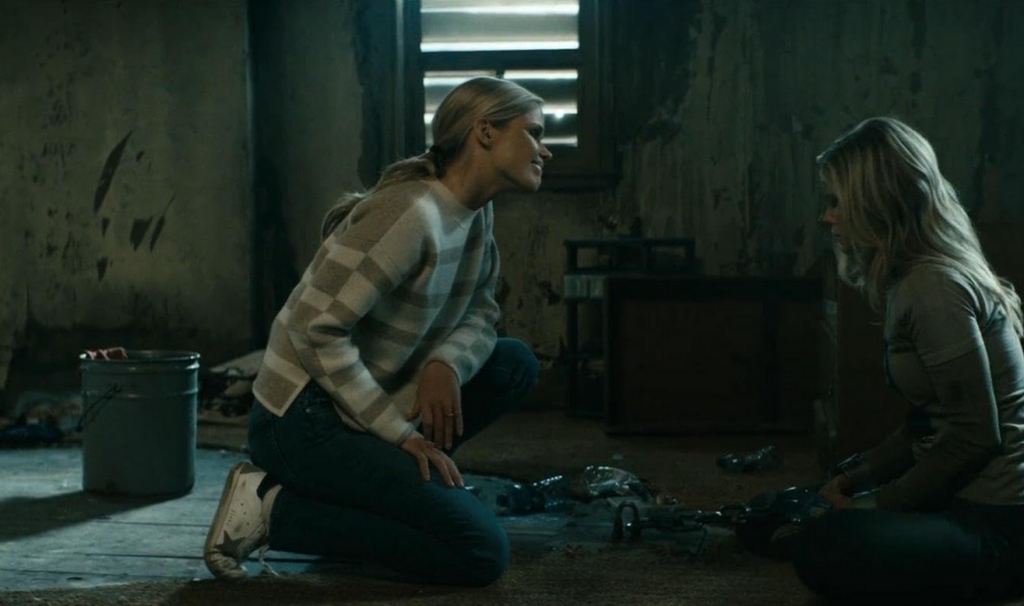
While that was devastating for the character, it was a little cathartic for those of us who felt like Annie was a little too good of a good guy.
What didn’t work
This is a small matter, but it is an issue that I want to address. After Annie finds out that Hughie slept with her doppelganger, she is furious at him.
In addition to this being unfair, it’s also a very cliche element to add. In almost every instance of a lookalike in fiction, there’s a moment where the love interest of the victim is fooled. Or almost fooled. And it’s always the same fight. It’s just played out and predictable. I’m just glad that it didn’t last very long.
Now that we’ve come to the end of the season, I can officially say that it was amazing. The story was deep and rich. The special effects were a stomach-turning good time. The character development was spot-on and satisfying. And, of course, it left me just about gagging to see what happens next. Unfortunately, it looks like we’ll have a bit of a wait. Because as of right now, the fifth season isn’t expected until 2026.

We’ve reached the second to last episode of The Boys, season four. And, as is appropriate for the penultimate episode of any show, things have to get a lot worse before they can get better.
Let’s discuss.
The story
Christmas is coming, and the whole world is getting ready. Ryan, despite being very clear that he didn’t want to appear on any TV shows or movies, has been strong-armed into participating in a Vought puppet Christmas special. He draws the line, though, when asked to sing about turning one’s parents in if they start talking about woke things.
Meanwhile, The Boys are trying to keep each other together. Butcher decides to take Sameer to the rest of the team. He also gets Frenchie out of prison, hoping they can make the Sup virus necessary to finally take down Homelander. Instead, this decision means disaster for one member of the team.
What worked
I first want to talk about Ryan’s speech near the end of the episode. Because it was exactly the moral of this whole story.
Ryan’s dad is a monster. His stepdad is also kind of a monster. But Ryan is a good kid. He cares about people, about family. And while he loves Homelander and Butcher, he doesn’t want to be like them.
Even better, this speech sounded like something a kid would say. Ryan didn’t open his mouth and start sounding like a college student all of a sudden. He sounds like a kid who misses his mom and wants to live up to the good standards she set for him. And I think that’s terrific.
Speaking of Homelander, he shot himself in the foot in this episode. I said earlier in the season that his hubris was going to be his downfall, and I was right. Without Sage, he just has the same weaknesses he’s always had. He’s going to fail because he just isn’t clever enough or patient enough to succeed.
Without Sage, I think a win is in the bag for The Boys. This isn’t to say that Homelander by himself isn’t dangerous. It’s just that he’s more like a wildfire than a controlled burn. He’s going to cause a lot of damage, but not get anything he wants out of it.
More’s the pity for him and everyone else who has to share his world.
Finally, I am thrilled with A-Train’s redemption story. I love that he wants to be a good person not to save himself, but to be a good person. His honest, pure and warm reaction to that little kid smiling at him in the last episode was heartwarming. It changed him in a moment, bringing to light a goodness that he’s been keeping under wraps for a long time.
This, along with Ryan’s courageous speech, proves once again what The Boys does so well. Yes, it’s gruesome. Yes, there’s blood and balls and batshit events. Yes, someone occasionally gets ripped in half. But there is a true human goodness in the story. One that we catch glimpses of. There are good people among the monsters. There is hope for redemption.
What didn’t work
Of course, so few things in this life are perfect, and this episode was no exception. For instance, I was irritated by the insinuation that Butcher cheated on his wife.
That just doesn’t make any sense. We’ve seen flashbacks of Billy and Becca. They were happy. He was happy. He was head over heels for her. And I don’t think it’s realistic or necessary for the character to throw in that he cheated. It does nothing to add to the story, it’s just a weird and offputting moment.
Doesn’t Butcher have enough to hate about himself? Can’t we just give him that at least he was a good husband?
Finally, I kind of hate that we ended up with Annie being caught. It’s just cliche, which is something I don’t normally say about this show. It feels lazy unless they do something very clever with it in the last episode. Which, I suppose, they might.
Next up is the season finale. And with this season being as insane as it has been, I’m expecting nothing short of bloody fireworks. And I mean literal fireworks of blood. At this point, would it surprise anyone?
 (4 / 5)
(4 / 5)
Episode six of The Boys was one of the most surprising episodes of the series so far. And that is certainly saying something. Because this season has so far been bonkers.
The story
Our episode today revolves around a party at Tek Knight’s lovely mansion. Yes, it does look just like Wayne Manor.
The Boys know that Tek Knight is working with Homelander on something, but they don’t know the details. So they decide to send Hughie in to bug the mansion.
Because that’s worked so well the other two times he’s tried to hide a bug!
It should surprise no one that this time goes no better. Hughie finds himself in Tek Knight’s basement. And by that I mean his BDSM dungeon.
Meanwhile, the party upstairs is no less disturbing. Homelander and Sage are trying to convince some well-off political donors to support a cue after the election. When pressed for details on his plan, Homelander freezes. He looks to Sage for help, but she wasn’t recently shot in the head and still in the junk food stage of her healing.
Fortunately, or unfortunately depending on your point of view, Neuman jumps in and saves the day.
What works
If I’m going to say one thing about this episode, it didn’t hold back at all. I didn’t expect them to show a character masturbating, sitting their bare behind on a cake, or spraying breastmilk into someone’s face. But every time I thought they’d cut the scene and let something be left to our imagination, they did not do that.
This is a dangerous move. Whenever you show the monster, you run the risk of them not being scary enough, or gross enough. As Stephen King says in Danse Macabre, to leave this sort of thing to the imagination if the reader makes things so much worse. So when they finally experience the monster, they might say that this isn’t so bad. It could have been so much worse.
But in this case, they managed to avoid that by making the scenes, especially the ones in Tek Knight’s dungeon, so much worse than I imagined it would be.
What doesn’t work
While this was a deeply disturbing episode in many ways, there was one really innocent and sweet moment.
And yes, I did have a problem with it.
Confronted by Firecracker, Annie decides to apologize for spreading rumors about her when they were kids. She tells her that she is genuinely sorry.
And I believe her. I don’t think Firecracker did, but I did.
So why is this an issue? Because I’m starting to think that Annie is maybe too nice. She is too good.
I know that Annie is our good guy. But every one of the other good guys has flaws. Hughie let his pride get in the way and took Temp V. MM hid himself from his daughter instead of teaching her to work through her emotions. Kimiko is far too closed off and has a hard time trusting others. Frenchie numbs himself with drugs. And well, what hasn’t Butcher done?
It is unrealistic that Annie is just so kind and so flawless. We all have shadows in our personalities. We all have weaknesses, we all mess up. We all do things we wish we could take back. The fact that Annie doesn’t seem to have anything like that is not just unrealistic. It’s infantilizing.
Give her some deep dark secrets. Give her something real to regret.
This was a shocking episode, even for someone fairly jaded like me. I wasn’t expecting the sort of weird sexual depravity, though I guess maybe I should have seen it coming. It was dark, upsetting, tense, and funny as hell. And with just two episodes left in the season, I can imagine the stakes are only going to get higher.
 (4 / 5)
(4 / 5)
By the way, if you like my writing you can get my short story, Man In The Woods, on Smashwords and Amazon.



